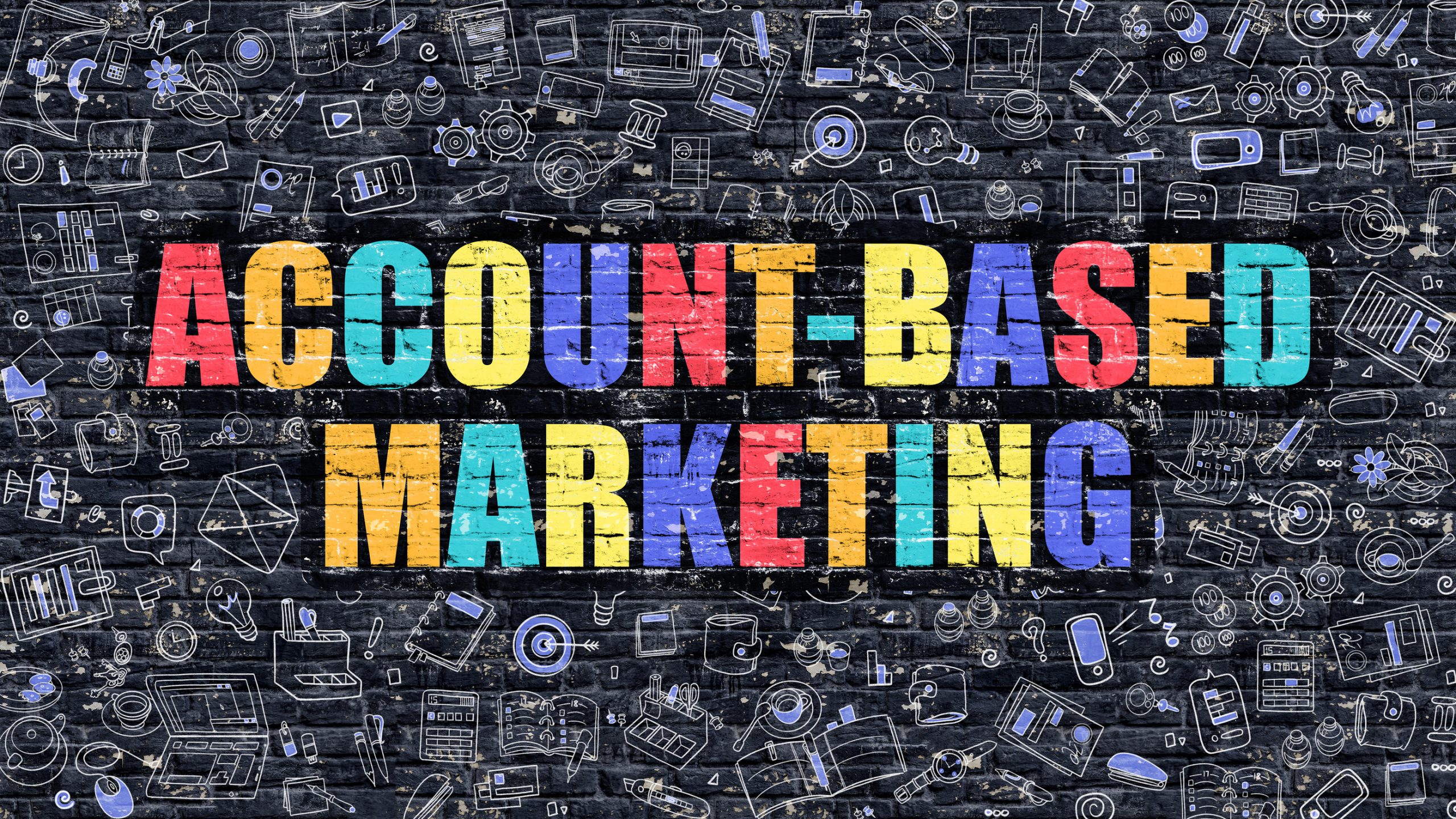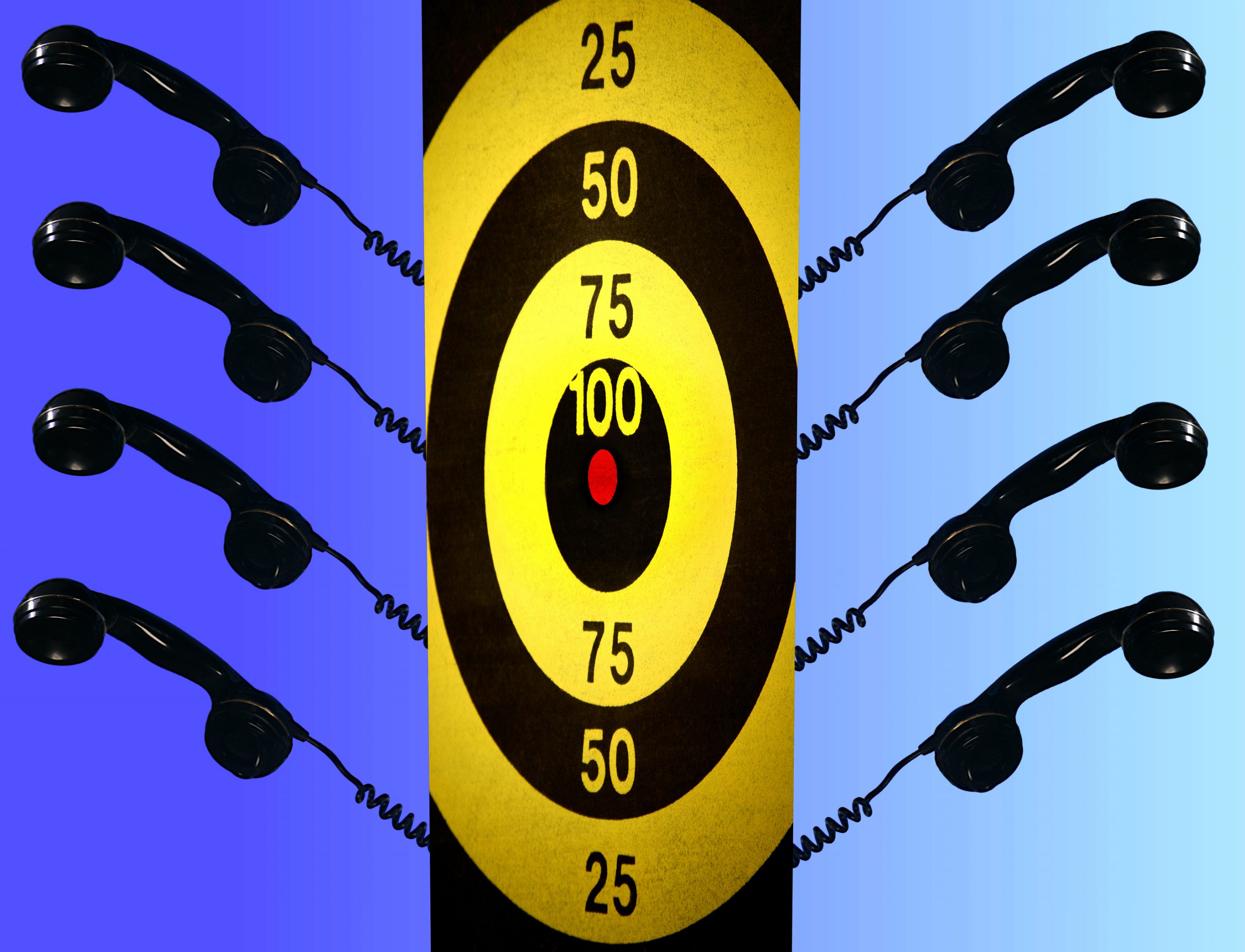
8 Account-Based-Marketing Tactics That Never Go Out Of Style
Account-based marketing (ABM) tactics are all the rage these days in the B2B world. A quick Google search reveals dozens of articles about ABM strategies and how great they are for B2B marketing.
Question is… does any of this stuff actually work? And what are the actual steps to implement these tactics into your account-based marketing plan?
The short answer? Yes, but… it definitely ain’t a cakewalk. The good news is this — with the right strategic approach and tactical execution, ABM can become the goose that lays your golden eggs.
In this article, we’ll talk about 8 account-based marketing tactics that are actually proven to work.
First, we’ll go over the basics and what you need to know about account-based marketing. Then, we’ll dive right into the nitty-gritty tactics — along with specific examples, ideas,activities, tools and best practices you can apply to your own ABM campaigns (and land those key accounts you’ve always dreamed about.)
What is account-based marketing (ABM)?

Here’s a simple, jargon-free definition of account-based marketing (ABM):
Identifying the ideal accounts that your company can serve better than anyone else and would mean significant growth to land as a client. Then, putting all of your sales and marketing efforts towards closing those accounts by treating each prospect companyas its own “market.”
That’s right, each account becomes its own unique “universe” of prospects to whom you can market and sell. This translates beautifully into the B2B marketing world, where (in most cases) you already have to deal with multiple decision-makers.
Some people call this approach “target marketing” or “key account marketing”, but the concept itself is really nothing new.
For example, the great Chet Holmes devised what amounts to an elaborate ABM strategy. He called it the “Dream 100” list, which he presented in his magnum opus book, The Ultimate Sales Machine.
Chet’s approach involves creating a list of the 100 “dream” companies you want to convert into clients, then surrounding those target accounts relentlessly with the full force of all your available sales and marketing resources… Sounds familiar, right?
(Psst… Do yourself a favor & go buy that book right now — best $10 you’ll ever spend. Go on, we’ll still be here when you’re done.)
The 6 steps all good ABM plans should have

Hold on there, cowboy… before you jump headfirst into an ABM campaign and start trying a million different tactics, you need a straightforward ABM plan that your whole team can follow.
Here’s a dead-simple, 6-step framework for account-based marketing that every great campaign follows.
- Identify ‘em: Who are your perfect clients? This doesn’t just mean companies that you’ll make a TON of money off of (though it certainly does mean that.) Look deeper — what companies can your product or service help the most? How big are they in terms of employees, revenues, etc.? Where are they located?
Ideally at the end of this process you’ll have a carefully-considered list of 50-100 target accounts to go after. - Research ‘em: What makes your prospects tick? What keeps ‘em up at night? What are the burning, agonizingly painful holes your product or service can fill? Your marketing and sales teams should obviously talk about this, but don’t just stop there. You need to really dig into the brains of your target personas in order to make everything in steps 3-6 actually work.
- Write copy to compel ‘em: Remember all that exhaustive research you did in step 2? (You didn’t skip that step… did you?) Well, now it’s time to put it to use. Start putting together the content and sales collateral that’s going to compel your target accounts to take action. This includes blog posts, eBooks, whitepapers, direct mail, videos… you name it, all targeted to the prospect’s stage along the buyer’s journey. This is the “rocket fuel” you’re going to use to propel all of your sales and marketing efforts moving forward.
- Line ‘em up: Once you’ve got your content ready, it’s time to pick your channels. Where do your prospects actually look for information related to your product or services? And once they’ve visited your website, where can you get back in front of them to move them deeper down your marketing funnel? Channels could include everything from phone calls and direct mail to blogs and PPC ads, and they’ll run the gamut from sales to marketing — and back. You want a coordinated plan of attack that hits ‘em from all angles. Be careful here. Pick the wrong channels, and you’ll waste tons of time and dough spinning your wheels. Pick the right channels and you’ll start landing accounts like crazy. We recommend a “test and see” approach here to minimize risk (Hint: use that research you did in step 2.)
- Knock ‘em down: Execute your planand staypersistent with it. A lot of times, campaigns like this take time to bear fruit… especially if your sales cycle is longer than 3 months.
- Analyze, repeat, profit:After a significant amount of activity, you need to iterate. What’s working and what’s not? Cut the losers (that means marketing channels, campaigns, salespeople, etc.) and put more money behind the winners. Repeat this process and reinvest as you land more accounts to rapidly scale your ABM campaign… and watch the dream clients roll in.
Pretty straightforward, right?
8 ABM tactics you can start using today
Okay, let’s get into it. We’ve lined up 8crunchy, ready-to-go tactics you can box up and start using in your own account-based marketing campaigns.
Now, fair warning — in order for these tactics to work, sales and marketing have to play very nice with each other. So if your S&M departments have any outstanding beefs with each other, they shouldkiss and make up right now. (We’ll wait.)
All friends now? Good… Let’s get started, shall we?
Tactic #1: Use a multi-tiered outbound prospecting sequence

This tactic alone has netted us a healthy six figures in new business revenue so far in 2016.
An easy mistake to make when you’re just starting out in account-based marketing is to think that there’s one person at each target account that you need to focus all your sales and marketing efforts on.
This couldn’t be further from the truth. Decisions at B2B companies rely on multiple stakeholders. And just because someone holds the power to make a decision on your product or service doesn’t mean they can’t be influenced by their teammates up or down the corporate food chain.
You need to penetrate all levels of your target accounts — from the CXO all the way down. That means your outbound marketing efforts will need to cater to prospects at each tier. For maximum effect, your inbound efforts and B2B content marketing strategies should follow suit.
Here’s how you can create your own outbound prospecting sequence that actually gets response from your target accounts:
- Determine your prospect “tiers”: What is the hierarchy of prospects that you will be targeting in your campaigns? For instance, suppose your offering is a marketing product or service. You may start with the CMO, then work your way down to the VP of marketing, marketing director, marketing manager and so forth.
- Collect contact data: To run your campaign, you’ll need emails and phone numbers for the prospects you’re looking to target. You can collect this data yourself, outsource to a third-party or buy contact data from a list company like Hoover’s or Dun & Bradstreet.
- Write your outreach email copy: Develop a sequence of 4-5 emails that will be sent to prospects at your target account over a few weeks. Protip: Don’t just send boring emails that talk about your firm’s capabilities — those emails end up in “Spam” folders. Instead, craft copy that speaks to your prospects’ pain and offers a path to a solution.
- Develop your sales follow-up: Create call scripts, templated social media messages and other assets your inside sales team can use to follow up after each email is sent out. Remember that it takes at least 6 to 8 touches to generate a viable sales lead, so set expectations and prepare your sales team for that journey.
- Execute your campaign: Send the emails, make the calls and touches. You can use your marketing automation system of choice (whether HubSpot, Marketo, Pardot, Eloqua or something else) or just do it old-school style if you prefer. Gather feedback as you go on what’s working and what’s not so you can generate even more appointments on your next campaign.
You can try to run this process internally or partner with a company that specializes in demand generation. We decided to outsource to a B2B account-based marketing services firm and saw fantastic results (full disclosure: we subsequently made a strategic investment in the firm — they’re called OutboundOps). But, of course, your mileage may varydepending on whichoutside vendor you use. Figure out which approach is the best fit for your current budget, resources and account-based marketing objectives.
Tactic #2: Target (& retarget) your key accounts using custom audiences

One of the most powerful aspects of the account-based marketing approach is that you are able to “surround” your prospects to the point where you appear omnipresent to them. All of a sudden, your company is popping up everywhere,around every corner!
And when your prospects can’t ignore you, a funny thing happens… they start paying attention to what you have to say. You start to gain authority and credibility.
One of the most effective ways to do this is to target your exact prospects on the web using “custom audiences.” These are specific lists of emails, phone numbers or other identifying information that ad platforms can match up to users. You can then serve highly targeted ads directly to those users.
Different platforms name this type of targeting differently and each one has its own distinctparameters you can use to target:
- Twitter tailored audiences allow you to target prospects by specific twitter handles and previous website viewers.
- Linkedin company targeting isn’t exactly a custom audience, but it achieves practically the same aim by allowing you to serve ads to specific people at specific companies.
- Facebook custom audiences offer a wealth of targeting options, from phone number to email, retargeting and beyond.
- Google AdWords Customer Match allows you to serve ads across their search, display andvideo networks to specific lists of Gmail users.
Here’s a 5-step approach you can use to start getting in front of your B2B prospects on these platforms:
- Source company email / phone number data on your target account prospects. If you’re incorporating outbound prospecting into your account-based strategy, you’ve likely already got a nice dataset here.
- Match company data to personal data to retarget your prospects across multiple platforms. Because company accounts are not usually used to sign up for more personal platforms like Facebook, you’ll need to use a service like RocketReach to match company data to your prospects’ personal data. (Yes, it’s a little creepy. But you’re going to be using this info for good, not evil — right?)
- Build congruent campaigns and ad sets across each platform, targeted to your custom audience lists. Again, consider using the buyer’s journey as a framework for the sequence of campaigns and messages you’ll use to move these buyers through your funnel.
- Retarget to action takers (i.e. people who clicked your ad, downloaded your offer, etc.) with messaging designed to move them through the next logical step in the buying journey.
- Constantly test new ad /landing page copy throughout your campaigns to get more of your target accounts clicking on your ads, filling out your forms, etc.
Obviously, you should adjust your approach and channel selection based on the industry / personas you’re targeting. Once you’ve laser-focused your advertising efforts on your key accounts, you’ll drastically slash wasted ad spend. Plus, you’ll save your inside sales team from having to waste time on inquiries from unqualified prospects.
Tactic #3: Build joint-venture campaigns with your fellow account-seekers

You’re not the only company going after your key accounts… and that’s a good thing. According to a 2009 study by KPMG, 60% of respondents from Fortune 500 companies used joint ventures to access markets in the same industry — with a 52% success rate.
So not every joint venture will be a success, but the benefits of a successful partnership can be tremendous. One way to mitigate risk here is to put substantial upfront investment into the campaign launch planning and execution.
To get the ball rolling, make a list of companies that could benefit from collaboration in marketing to your key accounts. Here are a few brainstorming questions to get your started:
- What companies offer products or services that come before or after your product / service offering?
- Are there any non-competitive firms that offer a service used alongside your offering?
- What service or technology partners do you have that could directly or indirectly benefit from you landing a key account?
It’s highly likely that some subset of these companies is a) Actively pursuing (marketing to) the exact same accounts you are, and b) Open to sharing resources with you (and vice-versa) to land more target accounts.
Start reaching out to the highest potential partners on your list with whom you feel most confident you can develop a win-win relationship. Once you’ve secured a formal or informal partnership agreement, the opportunities are endless: co-branded webinars, shared marketing investments, coordinated outbound prospecting, email sponsorships… the list goes on and on.
The gist of the “joint-venture” concept is that you don’t need to rely on your own efforts alone to secure new accounts. By working together and sharing the burden with the right partner, you can get both get your foot-in-the-door to key accounts much faster.
Tactic #4: Create offers that set your prospects’ buying criteria for them

Ahh, yes… this is perhaps my favorite account-based marketing strategy.
Don’t just try to “go for the close” when a prospect gets on the phone with your inside sales team or fills out a form on your website. Everybody else offers a free demo or consultation — you want to offer information about the upcoming trends, threats and opportunities that will impact their business.
Why? Two reasons:
First, by positioning yourself as a source of valuable information, you move from being a solicitor in the eyes of your prospect accounts to a trusted advisor. Second, you can present your prospects with educational material that actually sets the criteria for their future purchase decision.
Here’s what that might look like in practice:
- Call your prospect and offer a free, educational workshop (in-person or webinar). The workshop should focus on specific threats or problems their company needs to be looking out for in the future, along with specific ways they can navigate these challenges.
- Give a presentation that delivers on your promises… but here’s the kicker. In your presentation, present the type of product or service you offer as one of the solutions to their challenges. And guess what? You can set the criteria for selecting a solutions provider to line up with your exact strengths.
To see an example of this taken to the extreme, check out HubSpot’s Academy. Notice how by creating certification programs around their sales and marketing training, they effectively indoctrinate the market to their business philosophy (and by proxy, their core products).
You want to achieve a similar effect with your target accounts in your educational campaigns. Get them to turn to you for information — not your competition.
Tactic #5: Pre-set appointments with prospects at industry events

Fact: B2B marketers spend a boatload of cash on trade shows. A 2015 survey from Forrester Research found that in-person trade shows, conferences and events occupied the largest estimated share of B2B marketing budgets, at 14% on average.
But the problem is, this is how most trade shows tend to work… First, you drop a ton of money renting on a booth or exhibit space. When your reps get there, they sheepishly band together or play on their cell phones until an attendee is bored / curious enough to walk up to your booth. Maybe they even grab one of those free pens on your table.
Sound familiar?
What if, instead of playing the waiting game and passively hoping your key accounts show up… you could rig the game in your favor by setting appointments at your booth before the conference even starts?
Just like ABM tactic #1, you can reach out to accounts that you know will be at your event. Using multi-touch campaigns, you can drive appointments to your booth that will keep your reps busy and productive.
Here’s how you can make that happen at your next industry event:
- Identify the key accounts / prospects that will be attending the event. If you haven’t already, make sure to collect their contact data so your sales team can reach out.
- Use a multi-touch approach to schedule appointments with key account prospects at your booth for consultations or demos. Use phone, email, Linkedin, Twitter and other channels to let your prospects know a) that you’ll be there, and b) that you should connect.
- Meet with your appointments at your booth and give them an outstanding demo / consultation. Make sure your field sales team has their presentation approach down to a science so you can have highly-productive conversations with your prospects.
- Follow-up with your appointments following the event to schedule next steps. Depending on how the event appointment went, that could mean anything from a closing call to a webinar invite. Either way, you need to proactively move those hard-won leads down your sales funnel.
Setting appointments beforehand for your booth doesn’t just keep your reps busy closing deals with target accounts. It also has a hidden benefit: social proof.
When people passing by your booth see other attendees interacting with your reps, they’ll get curious as to what’s so interesting at your booth and start walking over. That’s right, pre-event appointment setting can make your “inbound” account marketing efforts easier… which means more money for you. 🙂
Tactic #6: Host your own “honeypot” event for target accounts

This tactic works especially well if your offices are in close proximity to your key accounts.
For example, our firm’s target marketing focus is B2B technology & niche consulting / professional services firms. Our offices are in the DC metro area, so there are TONS of those types of companies all around us — so this would be a great strategy for us.
If your offices are miles from the nearest gas station, don’t worry — you can still apply this tactic to an extent by hosting online webinars (though you’ll miss out on the personal touch.)
Here’s how to run a killer event that attracts and converts your target accounts:
- Determine your “hook”: What will get your target prospects interested in coming to your event? Are they interested in wine? Are they “high rollers” that like to hit the casino? Or maybe they’re just really nerdy and into learning about solutions to a technical problem in their business.
- Pick a location: Where will your event be held — at your office? At a bar? On a golf course? Don’t just think about what’s convenient for you. Consider what event locations within your budget are appealing to your key accounts.
- Figure out the logistics: Will your attendees be sitting or standing? How many people can your venue hold? Work hard to cultivate an excellent experience for your attendees. Because a great event can generate a ton of goodwill with your key accounts… but a crap event will do the opposite.
- Promote the event: Use your email list, social media ads, inside sales team and other channels to get the word out. But also reach out to relevant local industry associations who might be able to co-promote your event as a benefit to their members.
- Work the crowd: During the event, get your business development reps out on the floor and chatting with your key account targets. Your reps should know before the event who they need to be talking to and exactly what their objective is for those conversations.
- Follow-up: Be sure to collect contact info from all your attendees and always follow up with them. Hot prospects should be followed up on by your inside sales team, while your remaining attendees can be added to an email nurture list down the road.
After the event is wrapped, ask the hard questions: did the right attendees show up to the event? Did they enjoy their experience and what could have made it better? Most importantly, were you able to build the right relationships and move any of your key accounts down the sales funnel?
The answers to these questions will help your future events suck less, so you can get more of the right people to come to your events. In the B2B world, great events can eventually blossom into massive conferences with a rabid following — HubSpot’s Inbound conference and Salesforce’s Dreamforce are great examples.
Tactic #7: Break through the clutter with “lumpy” direct mail

If you’re using direct mail for your account-based marketing campaigns, don’t just use boring-old letters. Even with the best envelope copy in the world, your letter will still get sorted in the “junk pile” by the office manager 9 times out of 10 — before it even reaches your prospect’s desk!
Remember, these are your dream accounts. So it will pay off to spend more on these mailings & think bigger (literally) about what you send them.
One great tactic that almost never fails to get your mailing opened and read? Use “lumpy” mail instead — mail that is curiously lumpy to the point that it’s irresistible to open.
The “lumps” in your mail are called “Freemiums,” which are special free gifts accomplish three things:
- Entice the prospect to open the package
- Invoke the law of reciprocity to inspire action
- Tie into the offer in your accompanying sales letter
For example, say you were a web analytics software selling to enterprise organizations with large amounts of web traffic data. You might send the prospect a Rubik’s Cube with a sales letter that starts, “Are you puzzled by the endless amounts of data on your website?” Then follow that up with an offer, whether it’s a sales call, free webinar or other boon for your prospect.
Important note: Don’t just send these lumpy mail pieces & sit on your hands waiting for a response. Make sure your inside sales team follows closely on the heels of your mailing with a sequence of calls, emails & touches that reference the lumpy mail piece.
Finally, don’t just end your campaign with one mailing — follow up with a second one, then a third! Continue to reach out to your key accounts until they’ve entered your sales pipeline.
Tactic #8: Build your cache of sales collateral (AKA “rocket fuel”)

Winning key accounts is a long game. In order to build relationships with those accounts, your inside sales team will need to continually drop value-bombs on your prospects. And that means content — lots of it.
So continually add to your stash of sales collateral over time. Not only will your salespeople be able to drip this content out to their prospects, but you’ll also be developing a growing body of indisputable proof that your company can help your target accounts solve their toughest challenges.
Here are a few items you should develop and promote as part of your account-based content marketing mix:
- Case studies: What victories have current or previous clients found by using your products or services? What questions do your target accounts have about the results your solution can provide? At the intersection of the answers to those two questions lies the topic of an epic case study.
- Blog posts: Smash together insights from your sales team with deep-dive keyword research to create great blog posts. Write posts that help your target accounts solve their problems and optimize them to pull organic traffic to your website.
- eBooks / whitepapers: These are a lot of work, so use data to figure out what resources your target accounts would actually want to download. Want to make it really easy on yourself? Combine your most popular blog posts on a similar topic into a resource — that way, you can literally copy-paste and know that the content will be well-received.
- Email series: Want an easy way to engage your prospects over a long period of time? Set up an educational email sequence using your autoresponder or marketing automation software to drip valuable tips and insights across a regular series of 5-10 emails.
- Videos / webinars: According to a survey conducted by ReelSEO, 96% of B2B organizations are using video in their marketing and 73% report a positive ROI. Enough said? Don’t just use video in your marketing collateral, though — explore how your inside sales team can use video to creatively connect with their target prospects as well.
Set a target number of content assets your team feels confident producing without slacking on quality, and then hit that target every month. Your bottom-line will thank you for it down the road.
Conclusion
Account-based marketing is a simple concept… but no one said it would be easy. Closing your dream accounts takes a lot of hard work and coordinated effort,from marketing to sales and beyond. But the payoff is worth it — because the deals you land will shape the growth of your organization for years to come.
Any one of these ABM tactics can help you win more key accounts. We recommend you start with the 1-2 tactics that fit best with your organization’s goals, strategy and budgets. Once you’ve got one tactic working, you can always add more tactics later.
Which of these account-based marketing tactics have you used successfully in your business? Are there any juicy tactics you’re using that we’ve missed in this article?
By the way,click here if you want help implementing account-based marketing tactics at your company >>
Most newsletters suck...
So while we technically have to call this a daily newsletter so people know what it is, it's anything but.
You won't find any 'industry standards' or 'guru best practices' here - only the real stuff that actually moves the needle.







